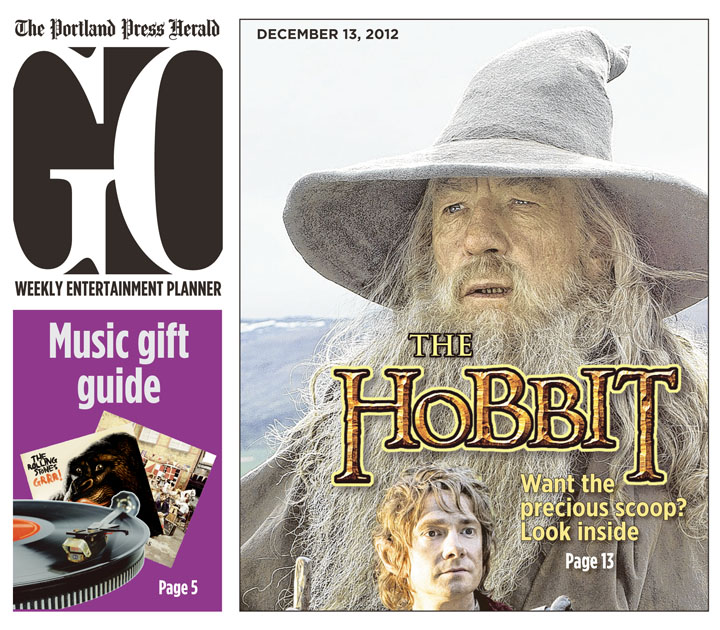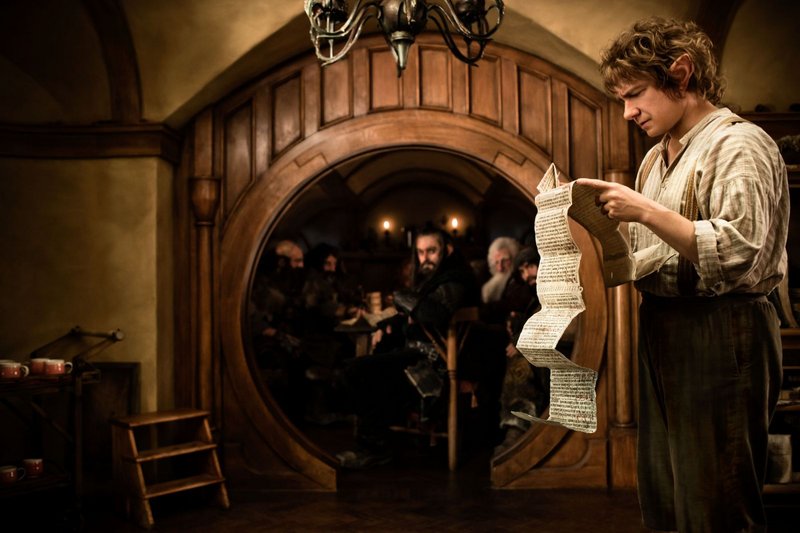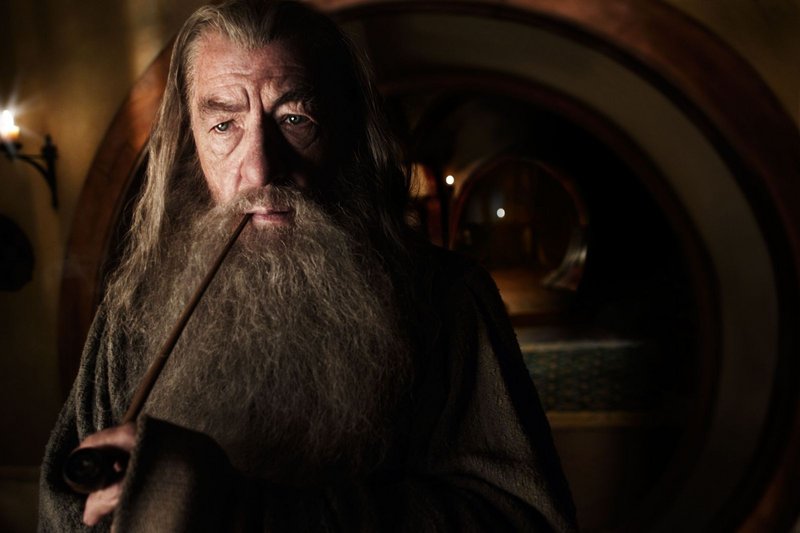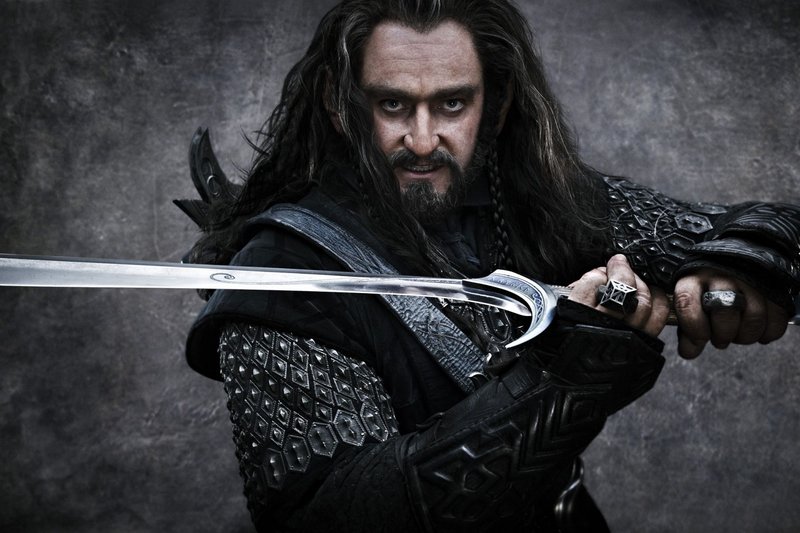For those who simply cannot get enough of Middle Earth, Peter Jackson’s “The Hobbit” promises to be the ultimate Travel New Zealand miniseries. He and his “Lord of the Rings” team have taken J.R.R. Tolkien’s dense but slight and more comical “Rings” prelude, a simple quest to rob a dragon, and blown it up into a trilogy.
And since the first installment, “An Unexpected Journey,” clocks in at almost three hours … well, you see what lies ahead of us.
The settings are gorgeous. The effects are spectacular. (Well, most of them.) Gollum looks more real than ever.
But in adding a prologue, in transposing characters from the “Rings” films into the narrative, and in having the luxury of including “Hobbit” minutia by the bushel basketful, I have to say the bloat shows. The hardcore faithful won’t admit it, but less cynical studios could have told this entire tale in three hours.
Ian Holm as Bilbo, in the days before the party that set “The Lord of the Rings” in motion, narrates his first great adventure to his nephew Frodo (yes, Elijah Wood). In his youth, Bilbo was rousted from his comfy hobbit hole by the great wizard Gandalf (Ian McKellen).
And in his youth, he looked an awful lot like Martin Freeman, a bit of inspired casting that pays off right away. Not only does Freeman resemble a younger Holm, the actor’s quirky Dr. Watson to Benedict Cumberbatch’s Sherlock Holmes sensibility (in the latest British TV version of Holmes and Watson) shines through here. No one is better suited to play young Bilbo, the “reluctant hero.”
All the dwarfs want Bilbo for, of course, his burglar skills. Not that he has any. But Gandalf told the dwarfs, Middle Earth’s homeless diaspora, that this bookish homebody Bilbo Baggins was just the sneaky fellow to take with them as they try to recover the treasure that the dragon Smaug stole from them when he destroyed and occupied their cavern-city ages ago.
To Bilbo, Gandalf counsels, “The world is not in your books and maps. It is — out there.”
So out there Bilbo goes, on “An Unexpected Journey” to the land of elves, and into a Middle Earth made increasingly dangerous by the incursions of trolls and goblins. He’s a hobbit (“halfling”) who acquires an elvish sword, a magical ring, an enemy for life (the fellow whose ring he stole) and the respect of a company of dwarfs along the way.
Jackson has the time to settle on details — the moths who fly out of the literally moth-eaten beard of the dwarfs. He can show us, in detail, Radagast the Brown (Sylvester McCoy), Gandalf’s nature-loving brother wizard, with a team of rabbits driving his sledge, even if he’s barely mentioned in “The Hobbit.”
Some of this is welcome, but one struggles to find a performance that stands out in this opening exposition-packed chapter, aside from Freeman and the reliably grandiose McKellen. Richard Armitage is properly heroic as Thorin, the heir to the dwarf throne. But frankly, he’s no Sean Bean.
It’s a lighter film, the way the book is a lighter novel. But it’s quite violent. One villain (voiced by Barry “Dame Edna” Humphries) even jokes about his manner of death. And there’s singing.
Scenes and sequences are rich, but they go on too long, which turns this “Hobbit” from a brisk stroll into a bit of a slog.
Jackson hasn’t forgotten his lessons in forced perspective — using the camera, doubles and the like to make Gandalf, men and elves tower over the hobbits and dwarfs in the “Rings” movies. But the contrast is less pronounced, less emphasized here.
And that lesson screenwriters learn when studying the masters seems utterly forgotten in the headlong march into making this book into a trilogy: Even Shakespeare needs editing.
Send questions/comments to the editors.






Comments are no longer available on this story